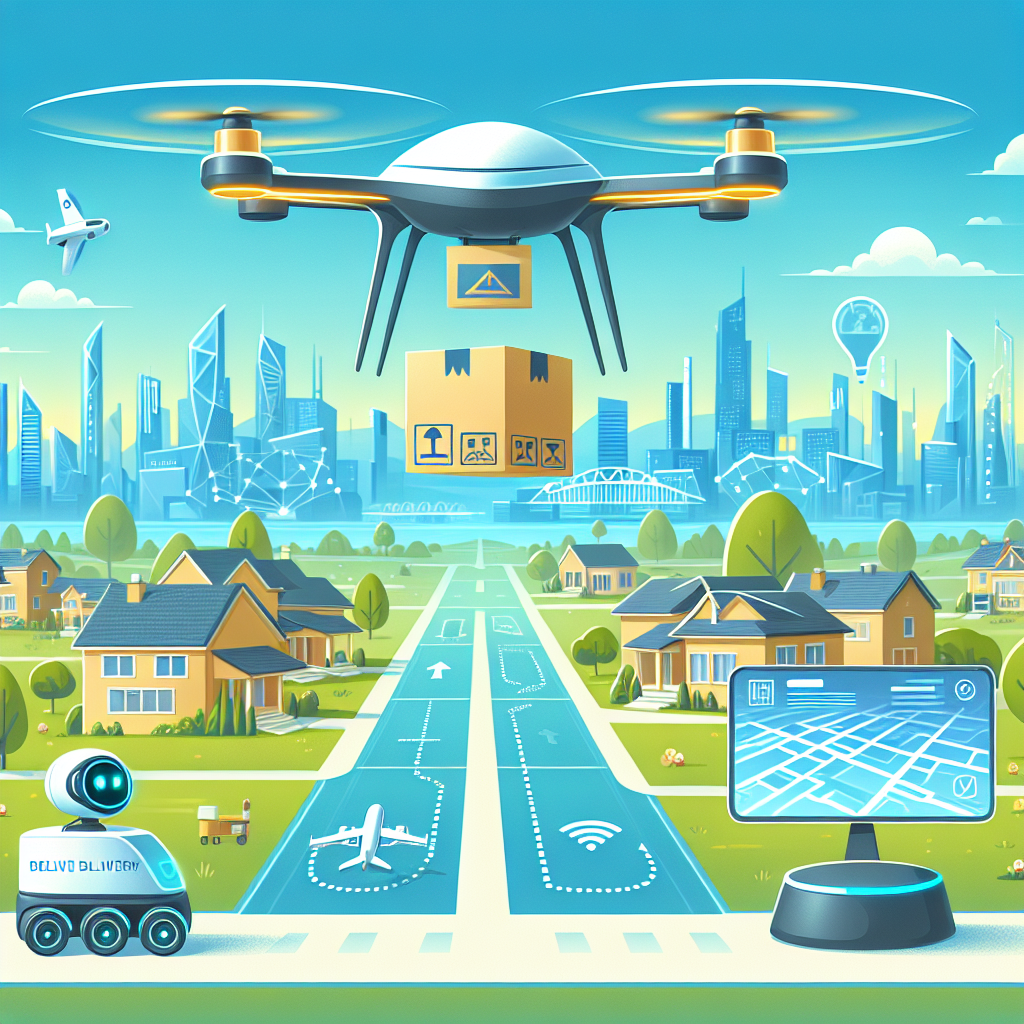In recent years, there has been a significant increase in the use of artificial intelligence (AI) in the last-mile delivery and logistics industry. AI has played a crucial role in improving efficiency, reducing costs, and enhancing customer satisfaction in the delivery process. From route optimization to predictive maintenance, AI technology has revolutionized the way goods are transported from distribution centers to the final destination.
One of the key ways AI is improving last-mile delivery is through route optimization. Traditionally, delivery routes were planned manually, which often led to inefficient routes, wasted time, and increased fuel costs. With AI, delivery companies can now use advanced algorithms to analyze data such as traffic patterns, weather conditions, and delivery locations to optimize routes in real time. This not only ensures that packages are delivered faster but also reduces fuel consumption and carbon emissions.
Another way AI is transforming last-mile delivery is through predictive maintenance. By using AI-powered sensors and analytics, delivery companies can monitor the health of their vehicles and equipment in real time. This allows them to predict when maintenance is needed before a breakdown occurs, reducing downtime and ensuring that deliveries are not delayed. Predictive maintenance also helps companies save on repair costs and prolong the lifespan of their vehicles, ultimately improving efficiency and customer satisfaction.
AI technology is also being used to enhance the customer experience in last-mile delivery. Through the use of chatbots and virtual assistants, customers can track their packages in real time, receive updates on delivery times, and communicate with delivery drivers. This level of transparency and communication helps build trust with customers and ensures that deliveries are made on time and without any issues. Additionally, AI-powered predictive analytics can help companies anticipate customer needs and preferences, allowing them to tailor their delivery services to meet individual requirements.
Furthermore, AI is revolutionizing the way deliveries are managed and coordinated. By using AI-powered software, delivery companies can automate processes such as order processing, inventory management, and dispatching. This streamlines operations, reduces human error, and improves overall efficiency in the delivery process. AI technology also enables companies to track and analyze data on delivery performance, allowing them to identify areas for improvement and make data-driven decisions to optimize their delivery operations.
In addition to improving efficiency and customer satisfaction, AI is also helping delivery companies reduce costs. By automating processes, optimizing routes, and predicting maintenance needs, companies can save on fuel, labor, and maintenance expenses. AI technology also allows companies to better utilize resources, such as vehicles and drivers, by optimizing schedules and improving productivity. These cost savings can be passed on to customers in the form of lower delivery fees or faster delivery times, further enhancing the overall delivery experience.
Overall, AI is transforming the last-mile delivery and logistics industry in numerous ways, from route optimization to predictive maintenance to customer experience enhancements. As the technology continues to evolve, we can expect to see even more innovations in the delivery process, ultimately leading to more efficient, cost-effective, and customer-centric delivery services.
FAQs:
Q: How is AI improving route optimization in last-mile delivery?
A: AI technology analyzes data such as traffic patterns, weather conditions, and delivery locations to optimize routes in real time, reducing fuel consumption and carbon emissions.
Q: How does AI help with predictive maintenance in last-mile delivery?
A: AI-powered sensors and analytics monitor the health of vehicles and equipment in real time, predicting maintenance needs before a breakdown occurs, reducing downtime and ensuring on-time deliveries.
Q: How is AI enhancing the customer experience in last-mile delivery?
A: Through chatbots and virtual assistants, customers can track packages, receive delivery updates, and communicate with drivers, improving transparency and trust in the delivery process.
Q: How is AI reducing costs in last-mile delivery?
A: By automating processes, optimizing routes, and predicting maintenance needs, AI helps companies save on fuel, labor, and maintenance expenses, ultimately reducing overall delivery costs.

